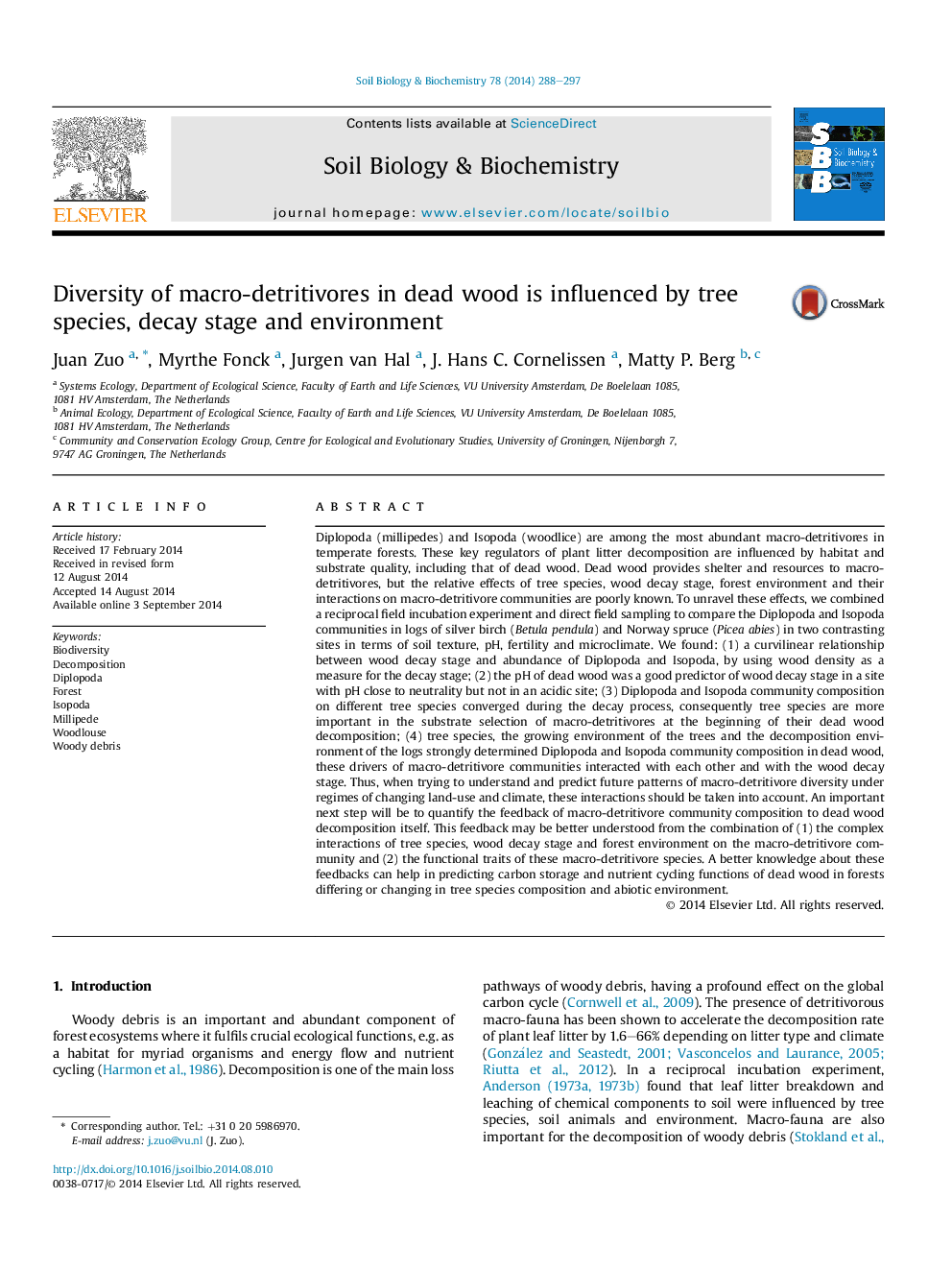| کد مقاله | کد نشریه | سال انتشار | مقاله انگلیسی | نسخه تمام متن |
|---|---|---|---|---|
| 2024595 | 1542606 | 2014 | 10 صفحه PDF | دانلود رایگان |
عنوان انگلیسی مقاله ISI
Diversity of macro-detritivores in dead wood is influenced by tree species, decay stage and environment
ترجمه فارسی عنوان
تنوع مواد مغذی در چوب مرده تحت تأثیر گونه های درختی، مرحله انفجار و محیط قرار می گیرد
دانلود مقاله + سفارش ترجمه
دانلود مقاله ISI انگلیسی
رایگان برای ایرانیان
کلمات کلیدی
موضوعات مرتبط
علوم زیستی و بیوفناوری
علوم کشاورزی و بیولوژیک
دانش خاک شناسی
چکیده انگلیسی
Diplopoda (millipedes) and Isopoda (woodlice) are among the most abundant macro-detritivores in temperate forests. These key regulators of plant litter decomposition are influenced by habitat and substrate quality, including that of dead wood. Dead wood provides shelter and resources to macro-detritivores, but the relative effects of tree species, wood decay stage, forest environment and their interactions on macro-detritivore communities are poorly known. To unravel these effects, we combined a reciprocal field incubation experiment and direct field sampling to compare the Diplopoda and Isopoda communities in logs of silver birch (Betula pendula) and Norway spruce (Picea abies) in two contrasting sites in terms of soil texture, pH, fertility and microclimate. We found: (1) a curvilinear relationship between wood decay stage and abundance of Diplopoda and Isopoda, by using wood density as a measure for the decay stage; (2) the pH of dead wood was a good predictor of wood decay stage in a site with pH close to neutrality but not in an acidic site; (3) Diplopoda and Isopoda community composition on different tree species converged during the decay process, consequently tree species are more important in the substrate selection of macro-detritivores at the beginning of their dead wood decomposition; (4) tree species, the growing environment of the trees and the decomposition environment of the logs strongly determined Diplopoda and Isopoda community composition in dead wood, these drivers of macro-detritivore communities interacted with each other and with the wood decay stage. Thus, when trying to understand and predict future patterns of macro-detritivore diversity under regimes of changing land-use and climate, these interactions should be taken into account. An important next step will be to quantify the feedback of macro-detritivore community composition to dead wood decomposition itself. This feedback may be better understood from the combination of (1) the complex interactions of tree species, wood decay stage and forest environment on the macro-detritivore community and (2) the functional traits of these macro-detritivore species. A better knowledge about these feedbacks can help in predicting carbon storage and nutrient cycling functions of dead wood in forests differing or changing in tree species composition and abiotic environment.
ناشر
Database: Elsevier - ScienceDirect (ساینس دایرکت)
Journal: Soil Biology and Biochemistry - Volume 78, November 2014, Pages 288-297
Journal: Soil Biology and Biochemistry - Volume 78, November 2014, Pages 288-297
نویسندگان
Juan Zuo, Myrthe Fonck, Jurgen van Hal, J. Hans C. Cornelissen, Matty P. Berg,
